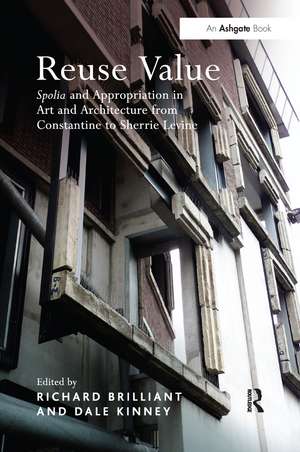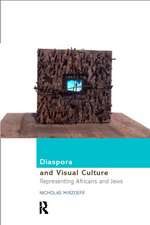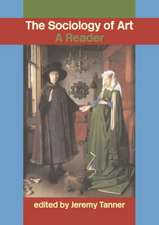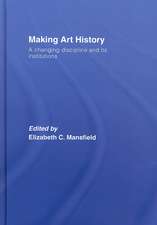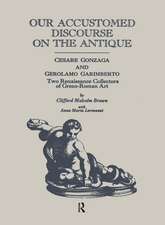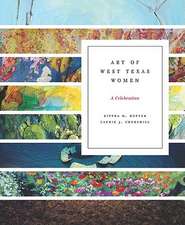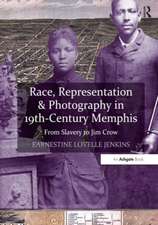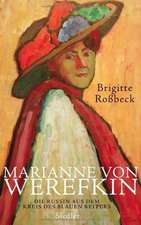Reuse Value: Spolia and Appropriation in Art and Architecture from Constantine to Sherrie Levine
Editat de Richard Brilliant, Dale Kinneyen Limba Engleză Paperback – 9 sep 2016
| Toate formatele și edițiile | Preț | Express |
|---|---|---|
| Paperback (1) | 404.25 lei 6-8 săpt. | |
| Taylor & Francis – 9 sep 2016 | 404.25 lei 6-8 săpt. | |
| Hardback (1) | 1059.18 lei 6-8 săpt. | |
| Taylor & Francis – 28 oct 2011 | 1059.18 lei 6-8 săpt. |
Preț: 404.25 lei
Preț vechi: 439.40 lei
-8% Nou
Puncte Express: 606
Preț estimativ în valută:
77.38€ • 84.08$ • 65.04£
77.38€ • 84.08$ • 65.04£
Carte tipărită la comandă
Livrare economică 21 aprilie-05 mai
Preluare comenzi: 021 569.72.76
Specificații
ISBN-13: 9781138246768
ISBN-10: 113824676X
Pagini: 284
Dimensiuni: 156 x 234 x 21 mm
Greutate: 0.44 kg
Ediția:1
Editura: Taylor & Francis
Colecția Routledge
Locul publicării:Oxford, United Kingdom
ISBN-10: 113824676X
Pagini: 284
Dimensiuni: 156 x 234 x 21 mm
Greutate: 0.44 kg
Ediția:1
Editura: Taylor & Francis
Colecția Routledge
Locul publicării:Oxford, United Kingdom
Notă biografică
Richard Brilliant is Professor of Art History and Archaeology and Anna S. Garbedian Professor in the Humanities, Emeritus, at Columbia University, USA; and Dale Kinney is Eugenia Chase Guild Professor in the Humanities, Emeritus, at Bryn Mawr College, USA.
Recenzii
'... presents a wide spectrum and diverse perspectives... This book would make an interesting addition to any reading list... Recommended.' Choice 'Richard Brilliant and Dale Kinney, as indefatigable pioneers in the field of spolia-studies, have inspired many colleagues to think and rethink their positions and notions; this collection of essays attests to that inspiration. As with many such volumes this book does not present one theme or one line of thought which other scholars can use, but the chapters are showcases for specific problems, inducing the reader to apply various approaches in their own field of research. On top of that the book is well-sized, with black-and-white illustrations of good quality.' Reviews in History 'Readers of the BMCR will be familiar with volumes that emerge from a conference and comprise diverse, very loosely related, narrowly focused studies on a small aspect of a capacious subject. While many of the individual articles in such collections are of high quality and interest, the books tend to be uneven in achievement and, especially, coherence, with the essays lacking a sustained relationship to each other and many (unfortunately) having only a tenuous relationship to the topic announced in the volume’s title. Reuse Value is very much an exception here - the book is highly readable, consistent in quality and attention to its subject, and extremely stimulating. The reasons for this are several. First, one can assume a strong editorial hand, likely a result of the scholarly seniority of the book’s editors, the distinguished art historians Richard Brilliant and Dale Kinney. (Indeed, the scholarly achievement of the contributors of this volume is remarkable; all but one is at least a full professor and many are emeriti.)... Another reason the collection is so strong as a whole is that the topic is simultaneously focused and broad... One of the volume’s great strengths is the awareness it shows of the relationship of historical an
Cuprins
Introduction, Dale Kinney; Chapter 1 On the Reuse of Antiquity: The Perspectives of the Archaeologist and of the Historian, Arnold Esch; Chapter 2 Reading Spolia in Late Antiquity and Contemporary Perception, Paolo Liverani; Chapter 3 The Use of Older Elements in the Architecture of Fourth-and Fifth-Century Rome: A Contribution to the Evaluation of Spolia, Hugo Brandenburg; Chapter 4 Spolia: A Definition in Ruins, Michael Greenhalgh; Chapter 5 Ancient Gems in the Middle Ages: Riches and Ready-mades, Dale Kinney; Chapter 6 Appropriation as Inscription: Making History in the First Friday Mosque of Delhi, Finbarr Barry Flood; Chapter 7 1Many thanks to the editors for inviting me to attend the colloquium at the Clark Art Institute and to contribute this essay to the publication, as well as for their most welcome criticisms, which have improved what follows. Thanks as well to Chris Celenza, Walter Stephens, and Herica Valladares for advice regarding some of the translations, and to John Blazejewski (Marquand Library, Princeton University) for photographs., Michael Koortbojian; Chapter 8 Authenticity and Alienation, Richard Brilliant; Chapter 9 1I want to thank Professors Dale Kinney and Richard Brilliant for including me in the Clark Colloquium from which this collection arises. I am also grateful to Mary Jo Mandula, vice president and general manager of the Tribune Properties, for providing access to the fragment files in the Tribune Tower. I wish to express my appreciation to my colleagues in the John Hope Franklin Center of Duke University faculty seminar, “Recycle”, in which I presented a brief version of this text, for their helpful observations. I am most deeply indebted to Professor Kalman Bland, who critically read and commented on various drafts of this paper., Annabel J. Wharton; Chapter 10 A Medieval Monument and its Modern Myths of Iconoclasm: The Enduring Contestations over the Qutb Complex in Delhi, India, Mrinalini Rajagopalan; Chapter 11 Spolia in Contemporary Architecture: Searching for Ornament and Place, Hans-Rudolf Meier; Chapter 12 Some Thoughts About the Significance of Postmodern Appropriation Art, Donald Kuspit; Epilogue Open Sesame: The Art Treasures of the World on Call, Richard Brilliant;
Descriere
This book offers a range of views on spolia and appropriation in art and architecture from fourth-century Rome to the late twentieth century. Using case studies from different historical moments and cultures, contributors test the limits of spolia as a critical category and seek to define its specific character in relation to other forms of artistic appropriation. Several authors explore the ethical issues raised by spoliation and their implications for the evaluation and interpretation of new work made with spolia.
